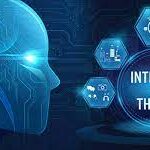
In the realm of medical imaging, a groundbreaking discovery is taking shape at the Massachusetts Institute of Technology (MIT). A collaboration between deep learning algorithms and the laws of physics is paving the way for remarkable advancements in Magnetic Resonance Imaging (MRI). Let’s delve into this pioneering research that has the potential to transform the world of medical diagnosis.
The Challenge of Motion in MRI
Motion artifacts have long been a challenge in MRI scans, often leading to distorted images and compromised diagnostic accuracy. Patient movement, even subtle tremors, can introduce errors that impact the quality of the results. Addressing this issue has been a long-standing goal in the field of medical imaging.
The MIT Breakthrough

MIT researchers have embarked on an innovative journey by combining the power of deep learning with the principles of physics. By leveraging advanced neural networks and understanding the physics of MRI, they’ve developed a technique that can effectively correct motion-corrupted MRI scans. This fusion of technology is proving to be a game-changer in the world of medical imaging.
Deep Learning’s Role
Deep learning algorithms, known for their ability to learn complex patterns from data, play a central role in this endeavor. The AI system learns to recognize and correct motion-induced errors in real-time, compensating for patient movements during the MRI scan. This approach ensures that the final images are not only clearer but also more precise in capturing anatomical details.
Physics-Based Insights
Understanding the underlying physics of MRI is crucial in this process. By modeling the physical properties of MRI scans and incorporating this knowledge into the deep learning algorithms, researchers are achieving remarkable results. This fusion of physics and AI enables the system to predict and correct distortions caused by motion, enhancing diagnostic accuracy.
Impact on Medical Diagnosis
The implications of this research are profound. Correcting motion artifacts in MRI scans can lead to more accurate diagnoses, particularly in areas such as neuroimaging, where precise anatomical details are critical. Patients, medical professionals, and researchers alike stand to benefit from this groundbreaking technology.
Challenges and Future Prospects
While the fusion of deep learning and physics holds immense promise, challenges remain. Fine-tuning the algorithms, optimizing computational efficiency, and addressing real-world clinical variations are ongoing endeavors. However, the potential to elevate the quality of medical imaging is driving this research forward.




